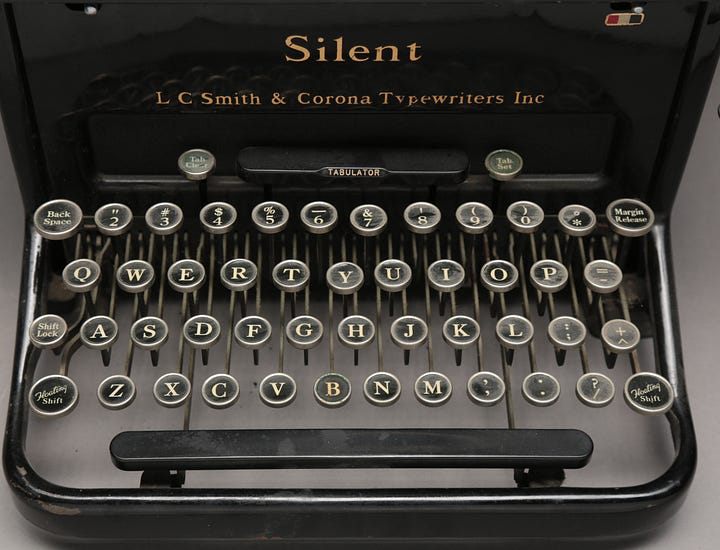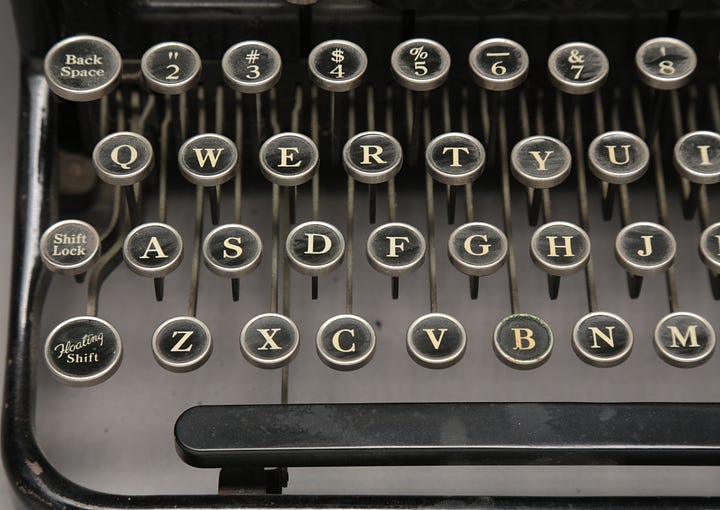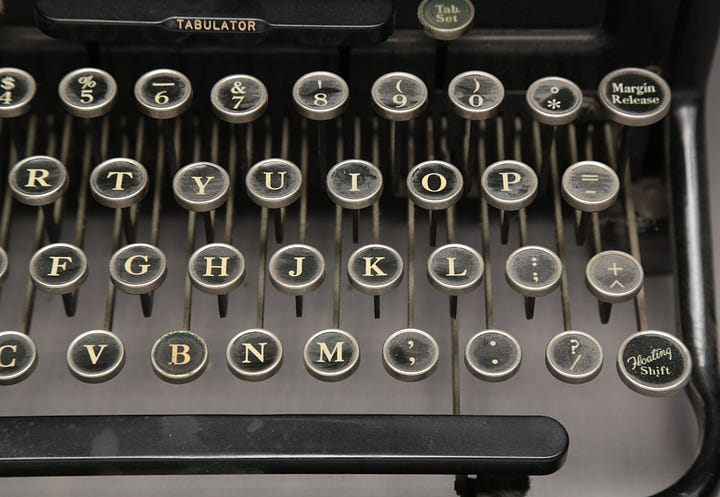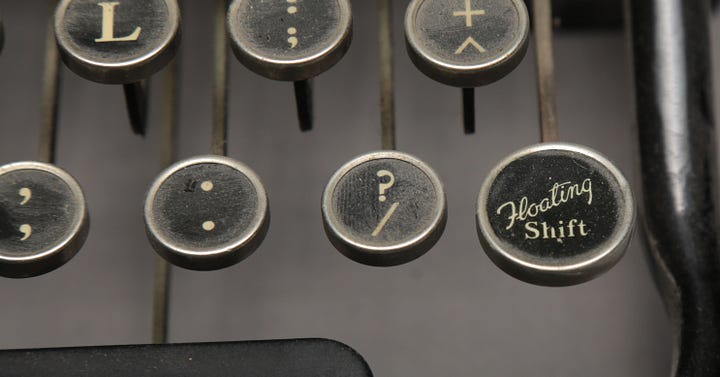And here it is!
Now that we have traveled down memory lane, let’s talk about typewriters.
By the way, I know folks who could actually type at that speed…accurately! Diane Burdine, was a medical transcriptionist, and my mother used to work with her at the hospital in Arroyo Grande, CA. Diane, used an IBM Selectric, which was a beast of a typewriter. Diane was so fast that is was noticeable when she hit the return key, because the lack of sound that came from the ball NOT hitting the paper was startling; it seemed to take the carriage forever to return. I always believed that Diane could type across the platen twice as fast as the carriage could return.
Now that I have traveled down memory lane, let’s talk about typewriters (for real!).
Say hello to the L. C. Smith & Corona Super Speed Silent typewriter. From the late 1930’s, the idea that this machine is silent, is more of a hope than a promise.
As many of you already know, I enjoy well-designed mechanical devices, with lots of moving parts. Other than an airplane engine, I think that the typewriter must be the most complex mechanical contraption ever made.
This model was certainly not a portable design. This damned thing is heavy. You would need a gang os stout lads to lift this onto your desk, and wherever they left it, that’s where you would type, so good luck!




For being nearly 100 years old, this typewriter is in very good condition; as far as I can tell, everything works.
I want to draw your attention to the placement of symbols on the keys. If you look at the top-left picture, you will see that there is no numeral 1 key, I am assuming that the operator would capitalize the letter I, for the number 1. Also, notice that the symbol for quotation marks is on the 2 key, on modern keyboards, the quotation mark is above the apostrophe symbol, next to the return key. Also, the comma and the period have their own, entirely dedicated keys.
I also want to direct your attention to the carriage return bar. First, it’s on right-hand side of the machine. I am not sure if this was a standard feature for every typewriter of the time, but soon after this model came out, Smith/Corona switched the carriage return to the left side of the typewriter. I always think of the lever being on the left side. I also like the design of the handle, it has a spoon-like shape, so that you could catch it easily with your pinky, and push the carriage back into the starting position. It seems that left-hand return handles are/were standard for manual typewriters, after this time.
On manual typewriters, I always like to take a shot of the mechanism, certainly all of the arms attached to the keys, I think it’s a cool shot.
I think that I saw
mention that he has a S/C Silent model, but I don’t know if it was this model. Kent?I wouldn’t mind having this machine, but I would have to get rid of a dozen cameras, to make room, so… the rest of you can bid on it.










Nice typewriter! My parakeet, Pedro, wasn't thrilled about the typewrite song. Squawk!
Love an old typewriter. (We have one in the house we got at a flea market that the kids occasionally drag out for the fun of writing with it.)